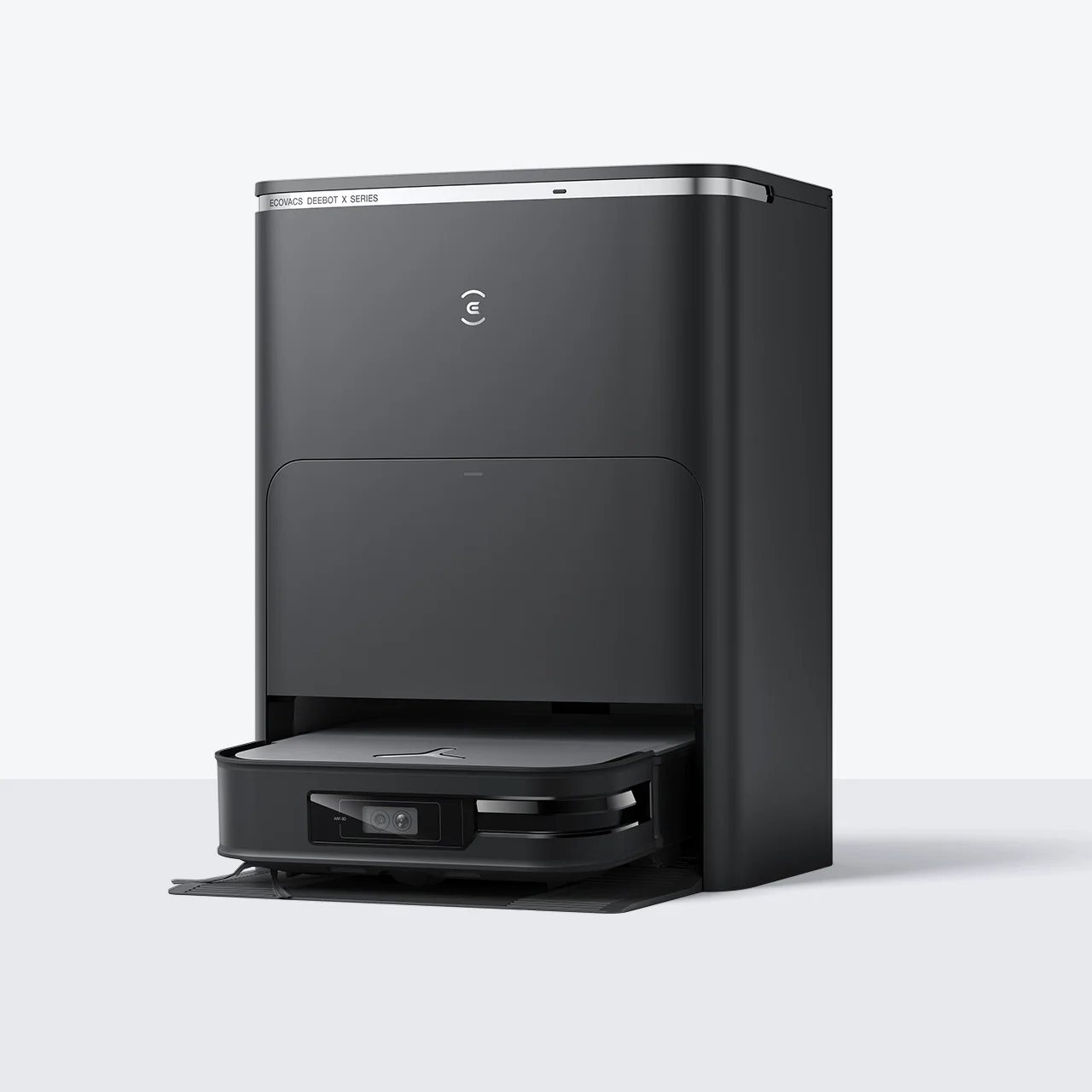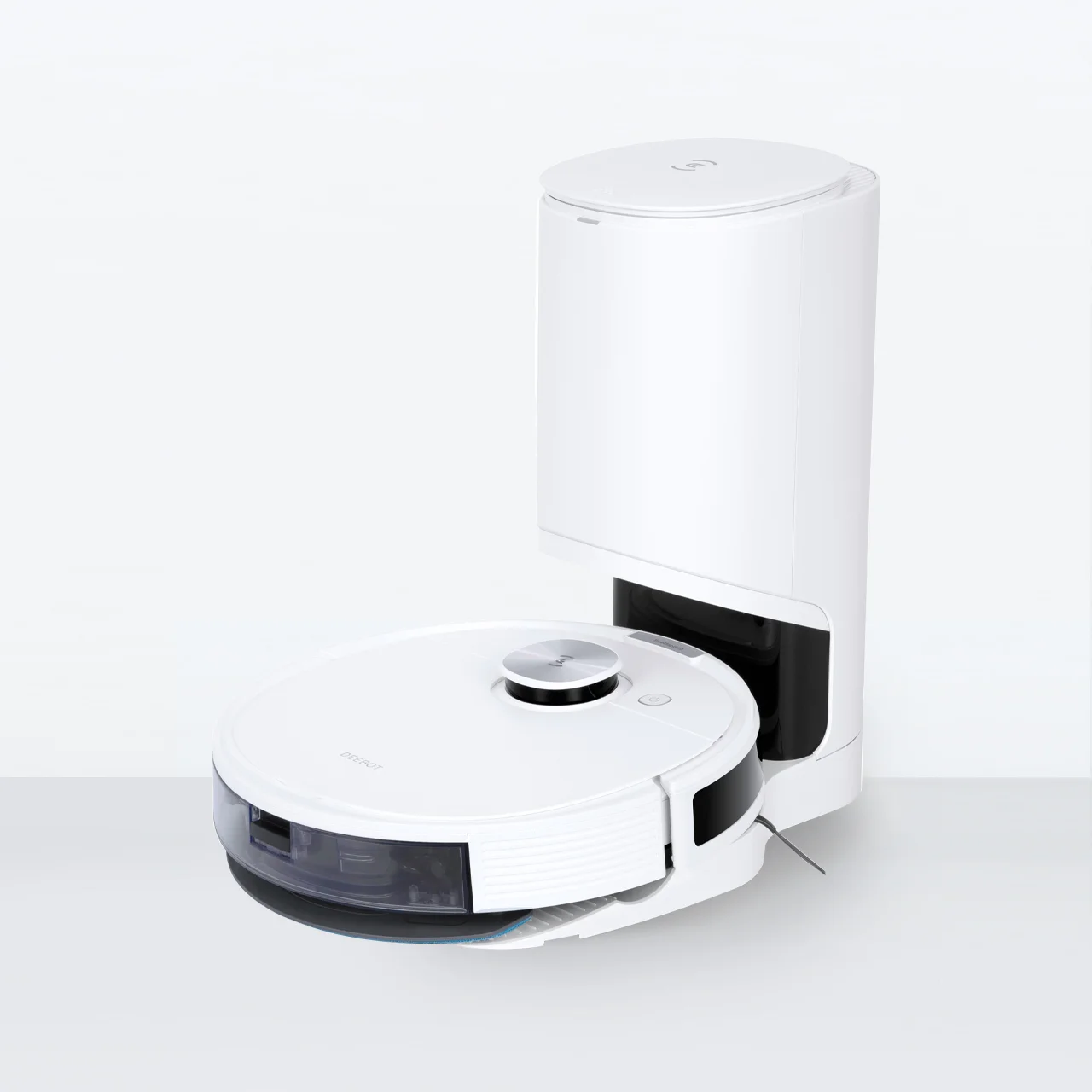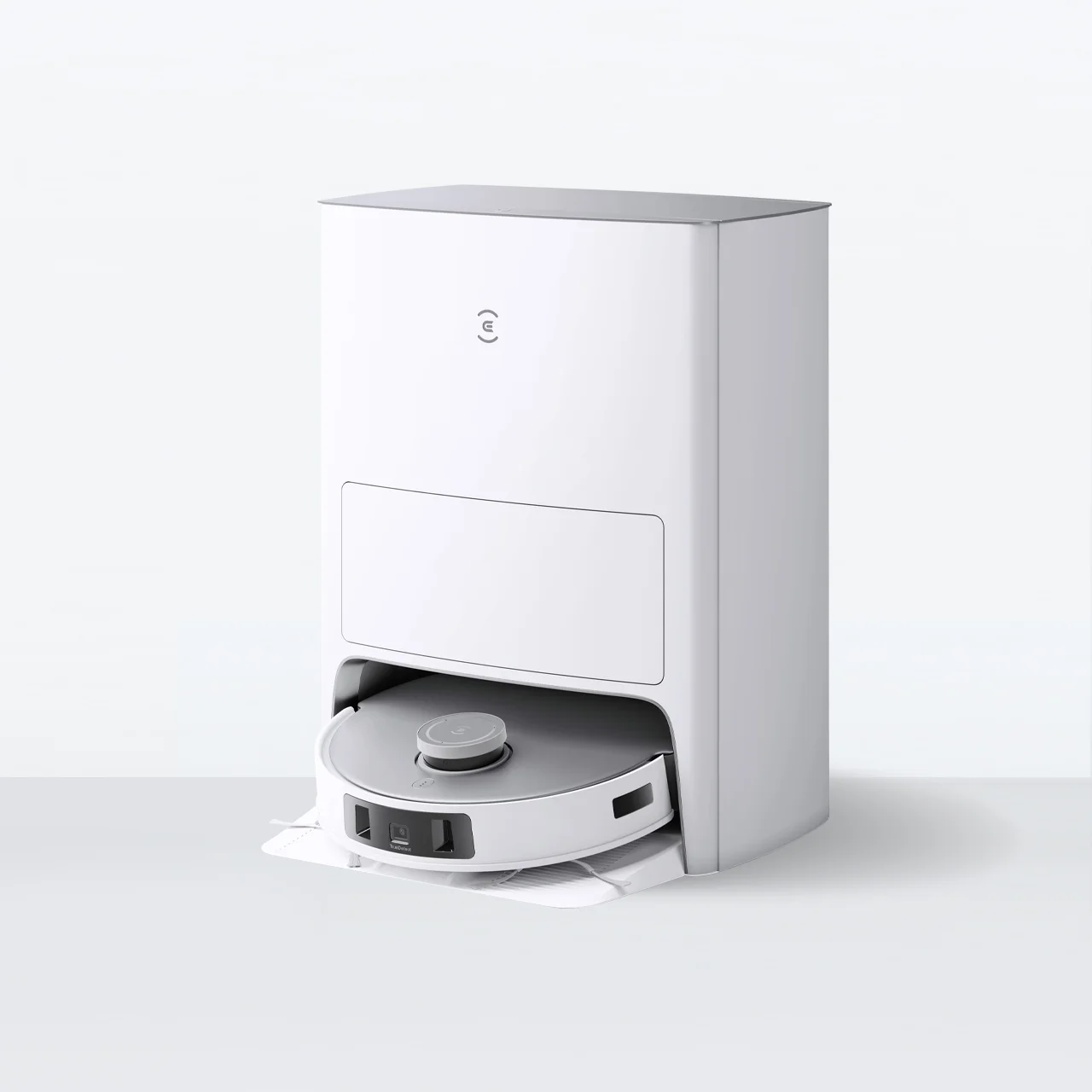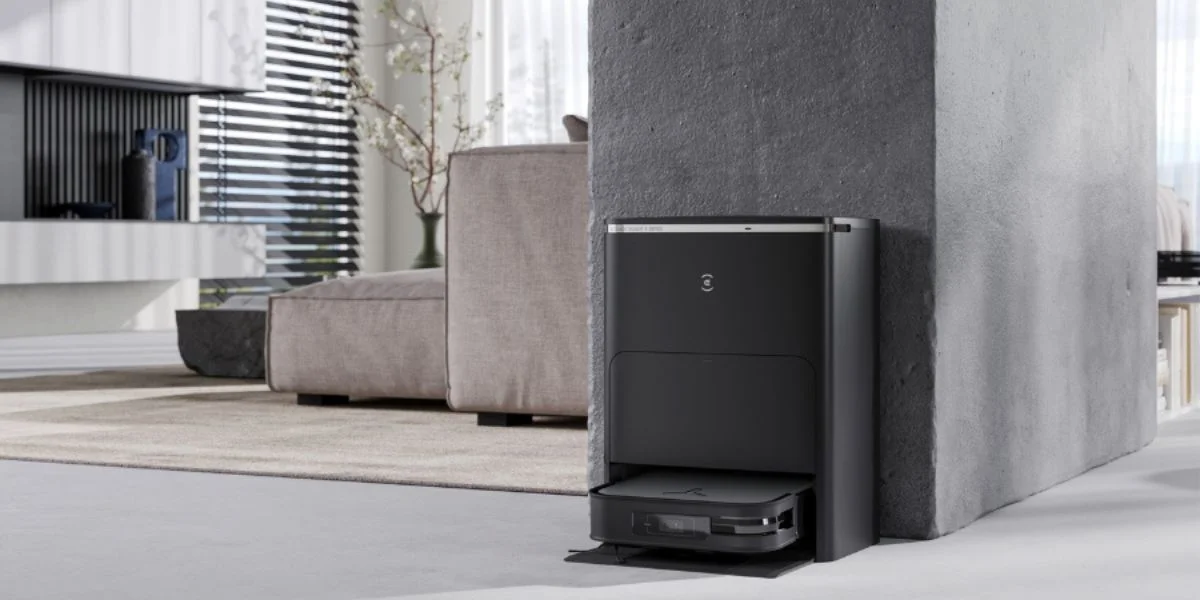
Robot vacuum cleaners are convenient as they provide an automated housecleaning experience. But there are times when they may cause concerns, like when they make loud or unusual noises. It’s important to figure out the reason behind this as it can interfere with your smart vacuum’s performance,by not letting it clear and collect dirt or charge properly.
These issues can often be resolved with simple fixes. Many times, all that’s needed is to pause the robot vacuum and perform a basic check on it. Some manufacturers like ECOVACS provide customer support to assist users in fixing these issues. Find out why auto vacuums make certain noises, how you can sort out the problem, and learn how to prevent them from happening again.
Why Your Robot Vacuum Is Making Loud Noises?
There are several common reasons why robot vacuum cleaners run with a loud noise, such as misaligned or blocked filters, damaged or obstructed wheels, worn-out or improperly positioned side brushes, or an ageing device. Depending on the problem with your device, it can make many noises, such as grinding, squeaking, rattling, clicking, buzzing, or whirring, which may indicate different issues.
Here are some common sounds that smart vacuums can make and their probable causes:
● Grinding: These sounds are most likely caused when bits of debris, especially large pieces like pet food, get jammed in the auto vacuum’s brushes or wheels, therefore preventing them from working properly.
● Clicking: You may hear this noise if the brushes haven’t been replaced properly after being cleaned. The device may also make this sound in its docking station if it isn’t positioned properly, making it slip on and off the contacts when it tries to charge. Another cause could be a loose or stuck cleaning bin or water station.
● Squeaking: The most common culprit behind this sound is debris lodged in the device’s moving components, such as the wheels or brushes. There may be issues like problems with the self-cleaning vacuum’s motor, or worn-out parts that need to be replaced.
● Rattling: This could mean that debris is jammed inside the cleaner — perhaps in the main brush, the filter, or the vacuum bag. Consider the possibility that the main brush holder is not securely placed or that the brush holder itself is worn down.
● Buzzing: If you hear this sound when your device is at its docking station, it may mean that there is debris built up on the charging contacts.
● Whirring: This can happen when the robotic vacuum is cleaning with high suction power or operating on a rough surface, such as in a garage.
How To Fix Weird Noises in Robot Vacuums?
There are many ways you can fix weird noises in robot vacuums, depending on what the issue is. Make sure you switch your device off before you begin tackling the problem.
Clean the brushes
Turn the auto vacuum over, then remove and clean the side brushes and main brush, as well as the brush housing. Clear these parts of any debris and entangled hair, making sure you don’t accidentally discard any device components, such as brush holders, in the process. Clean the brush slots, then reinstall the brushes.
Inspect and Clean the Wheels
Check if there are foreign objects stuck in the back wheels by slowly rotating them. Gently remove any debris, then wipe away other bits of loose dirt from the wheels using a soft-bristled cleaning brush. Take the front wheel out of its housing and remove debris from its sides and the cavity in which it usually rests. Replace the wheel in its housing.

Check and Clean the Filters
Take the filters out of the smart vacuum, and tap them gently to get rid of loose dirt or debris. Rinse them under cold water until they’re clean, and let them air dry completely before putting them back in your cleaning appliance. This only applies to filters that can be washed with water. Otherwise, you need to change the filter.
Tighten Loose Components
Inspect your device to see whether it has loose and detached components, such as seals, connections, and the brush roll. If you find that there are gaps between the parts, take them out and install them again securely. Check whether you replaced the brushes and wheels correctly after you’ve cleaned them.
Empty and Clean the Dustbin
Remove the cover of the automatic vacuum, then take the dustbin out of the device and empty it. Wash the bin, if required, then put it back in your appliance only after it has air-dried completely. If your device has an auto-empty station, check whether the large storage bin is full, as this can prevent your vacuum from emptying the dirt it collected while cleaning your home.
Lubricate Moving Parts
If you find that the front wheel of your appliance is squeaking, use a dry lubricant like a silicone spray and see if that resolves the issue. If this doesn’t work or if the sound comes from the back wheels, get in touch with the manufacturer to figure out the problem.
Inspect for Internal Damage
You may encounter issues related to internal damage in your appliance. For instance, the robot vacuum may keep stopping, indicating a possible faulty motor or a damaged battery, and may beep to let you know that there is an issue you need to attend to. In this case, consult the user manual or contact the manufacturer of your device.
How To Prevent Robot Vacuum From Making Loud Noises?
There are many methods to prevent your robot vacuum cleaner from making loud or unusual noises, which you can do at home. The best way is to regularly clean and maintain the appliance, which will avert most issues, especially if your smart vacuum is new. If you do this periodically, you will not face problems like debris or foreign objects obstructing the wheels, filters, or brushes — all of which can negatively impact your device’s performance.

Another option is to check the manufacturer's website for troubleshooting guides specific to your model. Be cautious when opening the vacuum or performing repairs, as it can void the warranty. If none of the suggested tips work or if you can’t find a solution for your problem, get in touch with the manufacturer’s customer service department.
Are ECOVACS' DEEBOTs noisy?
The noise levels of most ECOVACS DEEBOT robot vacuum cleaners are less than or equal to 80 dB — within the 85 dB limit recommended by the Australian Department of Climate Change, Energy, the Environment and Water (DCCEEW). The devices also have quiet modes that reduce the sound they emit during a cleaning session.
Several DEEBOT models also come with specially designed antibacterial dust bags that have four layers of high-quality materials, which prevents the contents from leaking. This minimises the chances of debris leaking or coming out of the bag, thereby reducing the likelihood of the auto vacuum making loud noises.
FAQ
Are robot vacuums noisy?
Not all smart vacuum cleaners are noisy. Most devices in the market produce noise between 70 and 80 dB on average, and newer models come with a quiet cleaning mode. For instance, the ECOVACS DEEBOT X2 OMNI emits sound levels of up to 64.9 dB1, compared to a blender that operates at 90 dB.
Is it normal for my robot vacuum to make different sounds on different floors?
A robotic vacuum cleaner usually makes more noise when cleaning a hard surface — like tile or concrete floors — than when vacuuming on a carpet. If you have a 3-in-1 cleaner with vacuuming, sweeping, and mopping capabilities, you may notice a difference in the type of sound your appliance makes when it sweeps a carpet as opposed to when it mops a hard floor.
How often should I clean my robot vacuum to prevent noise issues?
It’s important to clean your robot vacuum periodically to prevent it from making weird noises. Most self-cleaning vacuum manufacturers recommend that users clean the side wheels and main brush once a week, and the side brushes every two weeks. It’s also suggested that the bins of self-emptying robot vacuums are cleared out every 60 days, at most.
Disclaimer:
- The data 64.9 dB on the page is based on the test in the ECOVACS laboratory. The DEEBOT X2 OMNI can maintain a noise level when operating in the Cleaning/Mopping/Combo Mode. The actual usage may vary in different situations.
Related Products









